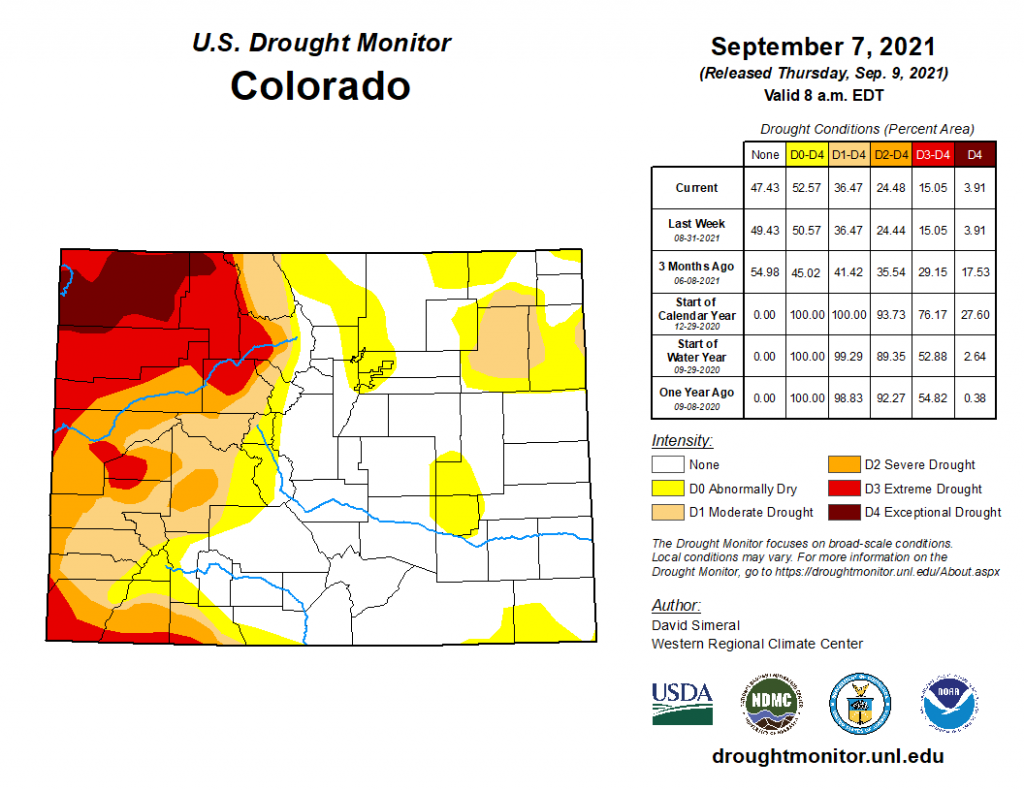Issue Date: Sunday, September 12th, 2021
Issue Time: 10:30 AM MDT
Summary:
Saturday marked the third day in a row of record-breaking heat across Eastern Colorado, with highs in the upper 90s and low 100s for much of the Urban Corridor, Palmer Ridge, and Eastern Plains. Denver International Airport reached 97 degrees, breaking their previous record of 93. In Southern Colorado, all three long time climate stations broke records again: Colorado Springs reached 98 degrees, breaking the previous record of 90; Pueblo reached 101 degrees, breaking the previous record of 97; and Alamosa reached 89 degrees, breaking the previous record of 83. Colorado Springs also broke their September all time high temperature record, and Alamosa tied theirs!
A shift in the general weather pattern and break down in the high-pressure ridge that has been dominating the weather allowed for afternoon showers to return to the state. A disturbance that pushed in from the northwest caused high winds and some moderate precipitation in the Northwest Slope and Grand Valley. Meanwhile, daytime heating allowed for afternoon storms to fire up along the high elevations and spill onto the Urban Corridor and Eastern Plains.
The main threat from thunderstorms was high winds, with some especially gusty thunderstorms reported yesterday. A severe-warned thunderstorm in the Northeast Plains caused 89 mph winds gusts in Sterling, along with some reported small tree limb and roof damage. On the Northwest Slope, up to 75 mph wind gusts were reported in Meeker.
Precipitation totals were generally light, but some areas under a stronger cell were able to pick up moderate accumulations. The No Name Met Station near Glenwood Springs received 0.22 inches yesterday. A CoCoRaHS observer in Glade Park, west of Grand Junction, reported up to 0.38 inches, while Grand Junction itself received up to 0.22 inches. Along the Urban Corridor, Trace – 0.15 inches were reported from Fort Collins to Colorado Springs. Overnight, another disturbance brought widespread, gentle showers to the Grand Valley and Northwest Slope before dissipating.
No flooding was reported on Saturday. For rainfall estimates in your area, check out the State Precipitation Map below.
Click Here For Map Overview




